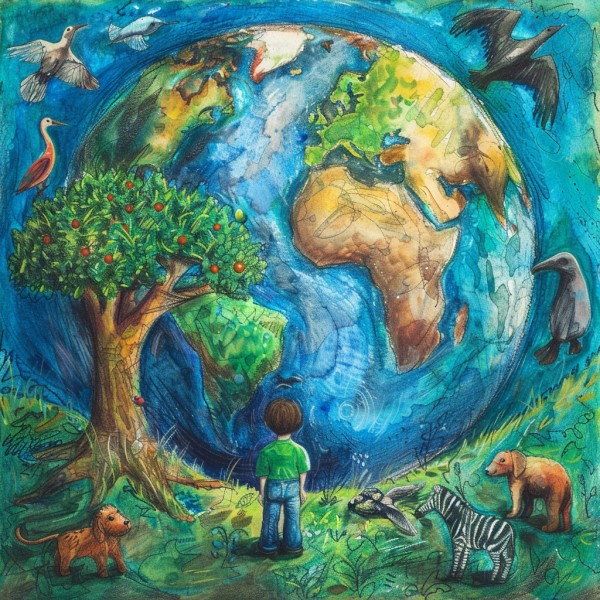KidZone Habitats
Conservation and Preservation: Safeguarding Our Natural Heritage
In our journey through the wonders of nature, we've seen the intricate tapestry of life that habitats support. Now, let's explore the crucial roles of conservation and preservation in safeguarding these precious ecosystems for future generations. This section will delve into why conserving habitats is paramount and highlight actions that can be taken to preserve the natural beauty and biodiversity of our planet.
The Need for Conservation
Conservation involves the sustainable management and use of natural resources to prevent habitat degradation and loss of biodiversity. As human populations grow and demand for resources increases, natural habitats are increasingly threatened by activities such as deforestation, pollution, overfishing, and climate change. Conservation efforts aim to strike a balance, ensuring that we meet our current needs without compromising the ability of future generations to meet theirs.

The Role of Preservation
Preservation takes conservation a step further by protecting natural areas from human interference altogether. This approach seeks to maintain habitats in their pristine state, allowing ecosystems to function naturally without the pressures of exploitation or development. Preservation is often applied to areas of significant ecological, cultural, or scientific importance, safeguarding them as sanctuaries for biodiversity and natural heritage.
Actions for Conservation and Preservation
- Protected Areas: Establishing national parks, wildlife reserves, and marine sanctuaries helps protect critical habitats and provides safe havens for endangered species. These areas are vital for research, education, and recreation, allowing people to connect with nature while conserving biodiversity.
- Sustainable Practices: Encouraging sustainable agriculture, forestry, and fishing practices can significantly reduce the impact on natural habitats. Techniques like crop rotation, selective logging, and responsible fishing ensure that resources are used in a way that can be replenished naturally.
- Combating Climate Change: Efforts to reduce greenhouse gas emissions, such as transitioning to renewable energy sources and enhancing energy efficiency, are crucial in combating climate change and its effects on natural habitats.
- Community Involvement: Engaging local communities in conservation efforts ensures that those who live closest to natural habitats have a stake in their preservation. Community-based conservation projects can provide sustainable livelihoods while protecting ecosystems.
- Education and Awareness: Raising awareness about the importance of conservation and preservation can inspire people to take action. Educational programs, nature documentaries, and conservation campaigns can foster a deeper connection with the natural world and motivate individuals and communities to contribute to conservation efforts.
Conservation in Action
- Reforestation Projects: Planting trees to restore deforested areas not only helps to bring back lost habitats but also combats climate change by absorbing carbon dioxide from the atmosphere.
- Wildlife Corridors: Creating corridors that connect fragmented habitats allows animals to safely migrate, find mates, and access new feeding grounds, essential for maintaining genetic diversity and ecosystem health.
- Pollution Clean-Up Initiatives: Efforts to clean up polluted rivers, oceans, and landscapes help restore healthy conditions for wildlife and prevent further degradation of habitats.

Getting Involved
You don't have to be a conservationist to make a difference. Simple actions like reducing waste, recycling, supporting sustainable products, and participating in local conservation initiatives can have a significant impact. Every effort counts in the collective journey toward preserving our planet's natural wonders.
Through conservation and preservation, we can ensure that the rich tapestry of life on Earth continues to thrive, offering endless opportunities for discovery, learning, and inspiration for generations to come. Let's all commit to being stewards of our planet, protecting and cherishing the natural habitats that sustain us all.
Advanced Information About Habitats >
Other links you might enjoy:
- DLTK's Animal Activities (crafts, coloring, recipes and more)
- Animal Coloring Pages - includes different plant and animal species